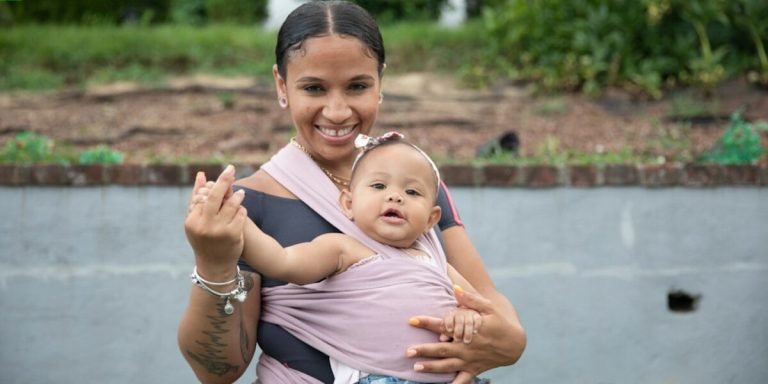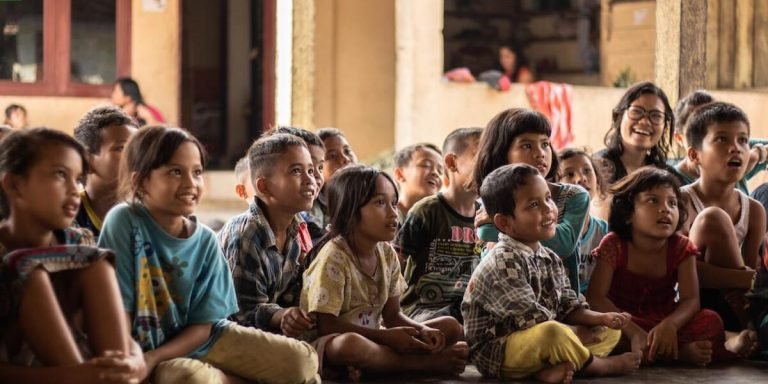Whole Child Approach: Embracing a Comprehensive Method for Child Education
Understanding every child’s unique needs and developmental pathways is a crucial aspect of effective childhood education. This concept forms the basis for the “whole child approach”, an innovative strategy that focuses on catering to each facet of a young learner – this includes their physical, psychological, social, emotional and cognitive development.
Diving into this comprehensive method offers numerous benefits including better intellectual growth, improved behavior patterns as well as higher levels of empathy among youngsters. The whole-child approach fosters not only academic success but also contributes significantly to molding responsible citizens with strong decision-making capabilities.
Did you know?
Did you know? The “whole child” approach to education, first introduced by the Association for Supervision and Curriculum Development (ASCD) in 2007, emphasizes more than just academic achievement. It focuses on nurturing a child’s overall development including their social-emotional wellbeing and health.
Understanding the Whole Child Approach in Early Childhood Education
The “Whole Child Approach” has revolutionized early childhood education, primarily by acknowledging that each child is a unique learner with varied strengths and needs. In contrast to traditional educational paradigms that focus solely on academics, the Whole Child Approach places its emphasis on nurturing all aspects of a child’s development. This includes social-emotional growth, physical health and wellness, creative expression along with cognitive advancements.
In today’s increasingly digital era marked by 2023 tech-advancements , integrating technology within this approach becomes not only beneficial but essential for holistic learning environments. Effective integration can amplify individual students’ learning experiences as they interact more deeply with their lessons through diverse technological tools. These tools offer myriad ways to stimulate curiosity while making abstract concepts concrete.
However, such an effective blend of whole-child instruction with innovative technology calls for strategic planning from educators or parents navigating this process – balancing screen time appropriately so it doesn’t infringe upon other critical developmental areas like play-based discovery or human connection dynamics typically occurring in classrooms amongst peers and teachers alike.
The Five Key Domains of Development
The Whole Child Approach is a critical aspect of early childhood education, especially in the current year 2023. It provides an all-inclusive framework that allows educators to nurture children’s development optimally by focusing on five key domains: physical health and well-being, social-emotional learning, cognitive skills acquisition, language comprehension and communication proficiency, and artistic aesthetics appreciation.
Physical Health And Well-being: The first domain focuses on promoting good nutrition habits and regular exercise routines for young kids. Adopting the whole child approach enables us to ensure their growth isn’t just about mental capacity but also encompasses total physical wellness.
Social-Emotional Learning (SEL): SEL forms another crucial part of this method. This incorporates teaching youngsters how to manage emotions effectively through empathy exercises or interactive group activities that foster positive social interactions fostering teamwork spirit alongside personal relationships building efforts helping them grow emotionally mature as they age.
Cognitive Skills Acquisition: Cognitive skill refers to abilities such as problem-solving capacities among other analytical competencies like understanding concepts in math science etcetera which are developed based upon individualistic patterns rather than generic instructions thus ensuring knowledge absorption at own pace maximizing results achieved during instructional periods thereby facilitating overall academic progression rates too!
Integrating Social-Emotional Learning and Academics
Understanding how to integrate both academic education and social-emotional learning helps us better utilize this approach within early childhood education.
Today, thanks to advancements in technology, educators have an array of tools at their disposal for implementing such integration effectively. Technology allows tailored educational experiences that can attend to individual children’s needs while promoting collective cognitive and socio-emotional growth.
With digital games targeting critical thinking or group tasks on shared online platforms addressing teamwork skills, educators are successfully weaving together academics with vital life skills like empathy, cooperation, resilience among others – all crucial components of social-emotional learning.
For instance, imagine software designed specifically for young learners where they solve math puzzles as super-heroes working collectively trying to save the day! Here not only are mathematical concepts reinforced but team work encouraged too!
Technology creates engaging contexts where lessons aren’t limited by classroom boundaries or traditional methodologies anymore.
In fact interactive e-books now even allow character role-play – amplifying comprehension alongside nurturing understanding around emotional responses.
While technological aids present endless possibilities let’s avoid over-reliance reducing real-world interactions important during formative years especially considering screen-time concerns prevalent amongst parents these days.
Strategies for Implementing a Whole Child Curriculum
The role of technology in education has been amplified significantly over the years, and even more so as we progress into 2023. Implementing a whole child approach when integrating this advanced tech within an early childhood curriculum is pivotal for wholesome learning success. As John Dewey once said, “Education is not preparation for life; education is life itself.” This philosophy forms the essence of a ‘whole child’ centered instructional strategy that fosters cognitive skills along with emotional intelligence.
One key tactic to introduce technology through the lens of a whole-child teaching paradigm involves making it integral but non-dominant; using digital mediums as tools rather than crutches. For instance, take storytime sessions where children can write their own stories on tablets or computers instead of merely reading out loud from books. Not only does this expose them to basic word processors but also stimulates creativity and self-expression concurrently maintaining continuity with traditional methods.
However, promoting inclusivity while employing such techniques becomes critical – ensuring every student gets equal opportunity irrespective of his/her background or competency level; nobody should feel left behind due to lackluster technological accessibility or familiarity at home.
Finally yet importantly, open discussions about internet safety are vital too because these innocent young minds need educating regarding potential online threats they might encounter during explorative surfing sessions outside school hours.
Role of Play-Based Learning Environments
Play-based learning environments hold a pivotal role in the ‘whole child approach’ to education. This method of instruction is grounded in the understanding that children learn best through active engagement with their surroundings.
One key aspect of play-based learning involves inviting curiosity and exploration. In an environment rich with diverse educational tools, youngsters are encouraged to interact, experiment, and make discoveries on their own terms. These experiences tap into various aspects of a child’s development including cognitive skills, creativity expression as well as emotional growth.
Incorporating technology enhances these opportunities for exploration. For instance, interactive digital games or applications encourage problem-solving abilities while letting children have fun in the process. Having hands-on time with tech devices also helps advance motor skill enhancement at a young age itself.
Advancements made by edtech companies can help educators create dynamic play spaces filled with enchanting e-books imploring story-telling techniques supplemented by visual cues; puzzles that promote logical thinking; as well as art platforms allowing little ones to express imaginative ideas digitally- thus fostering essence from all developmental areas.
It’s crucial however not forget about examining screen-time rules during digital integration within early childhood settings which were re-evaluated due to pandemic-induced remote leaning situation here since 2020 forward but are still relevant today even more so than ever before seen .
Incorporating Multisensory Activities to Foster Holistic Growth
In the era of digital assimilation, adopting a whole child approach to education is more crucial than ever. Blending technology and early childhood education presents an opportunity for multisensory learning that aids in a child’s comprehensive development.
To ensure holistic growth through the whole child approach, integrating multi-sensory activities within your curriculum has become indispensable. This strategy not only helps keep kids engaged but also stimulates their cognitive progression at multiple levels simultaneously while making use of advancing technologies.
Consider these practical tips as part of our discussion on implementing such strategies:
1. Bring Virtual Reality (VR) into Play: VR can be used creatively to provide children with 3D sensory experiences. These could range from virtual tours around historical places or planets, enhancing visual spatial intelligence while offering interactive haptic feedback.
2.Controlled Screen Time for Learning Apps: Educative apps offer audio-visual interaction which promotes learning while exercising command over fine motor skills when swiping or clicking on options.
3.Introduce Coding Through Interactive Games: Many educational platforms now offer beginner-friendly coding sessions built like games aimed at preschoolers and kindergarteners where each level involves problem-solving tasks fostering analytical thinking along with tactile experience.
4.Utilize Tactile Technology Tools: Devices like smart tablets equipped with special stylus pens give young learners hands-on application opportunities helping them associate abstract ideas to concrete actions – right from letter formation instruction to solving puzzles by simple drag-drop operations – all this via touch-enabled exercises!
Assessing Progress within the Whole Child Framework
With the rapid evolution of technology, embracing a whole child approach in education has never been more critical. This holistic perspective focuses not only on academic achievement but also treads into areas like mental and physical health, social-emotional learning, as well as creativity and innovation. In doing so, it prepares children for today’s complex digital landscape while bolstering their overall development.
Assessing progress within this framework requires innovative strategies that seamlessly link pedagogical goals with tech-led solutions. For instance, digital platforms can be used to track students’ individual achievements across various developmental domains beyond traditional subjects like mathematics or reading skills alone. Additionally, these tools provide insights about cognitive functioning or emotional wellbeing by integrating analytics gleaned from learner interactions.
In essence then – embarking on the path of technological integration isn’t merely about introducing gadgets into classrooms; rather it entails crafting an engaging environment where young minds learn through exploration and personal discovery in sync with advancing technologies.
Tools and Techniques for Evaluative Measures
In the sphere of early childhood education, implementing a holistic or “whole child approach” has become paramount. This method takes into account all aspects of a child’s development and learning – emotions, physical status, social environment and academics.
Under the umbrella topic: “Assessing Progress within the Whole Child Framework”, one crucial aspect is understanding effective tools and techniques for evaluative measures that validate this integrated form of learning.
Technology plays an undeniable role even in preschool classrooms today in 2023, paving the way to conveniently quantify progress. Here are a few innovative examples:
1. Digital Portfolios: These online repositories act as digital backpacks where children can store their artwork, academic projects etcetera which showcases their growth over time.
2. Learning Management Systems (LMS): Platforms like Google Classroom allow teachers to track student’s assignments aiding not only assessment but also collaboration between parents-teacher-student trinity.
3. Online Behavioral Tracking Tools: Applications like ClassDojo help monitor behavior patterns giving insight about emotional well-being alongside scholastics.
Using Observational Assessments to Guide Teaching Practices
Implementing observational assessments within the whole child approach boosts our ability to guide teaching practices more effectively. It’s a clear window into understanding each child – their strengths, areas of improvement, and how they are navigating through their educational journey.
In early childhood education, observing children in different settings allows educators to gain insight into various aspects of learning. For example, you may observe a child’s interaction with others during playtime or assess cognitive skills when solving puzzles.
The integration of technology has made this process even easier and more accurate in 2023. Using applications that record data real-time not only saves time but enables teachers to monitor progress accurately instead of relying on memory alone.
So what do these observations look like? And how can we use them effectively?
Firstly, start by gathering as much information from your active observation periods – focus on everything; no detail is too small! This could be anything from noting language skills demonstrated during conversations with peers or marking down emotional reactions faced with new situations.
Conclusion
In essence, every child is like a unique patchwork quilt comprising various threads of interests, strengths, challenges and dreams. The “whole child approach” to education fosters the weaving together of these different aspects into a cohesive learning experience that prepares them not only for academic success but also life beyond school walls.
So as we strive towards supporting the growth and nurturing young minds holistically, remember our website as your reliable partner in this journey. Browse through for more on childhood education nuances or seek insights from parent-educator support articles; each piece designed to empower you with wholesome knowledge essential in harnessing a rich educational environment for tomorrow’s change-makers.







